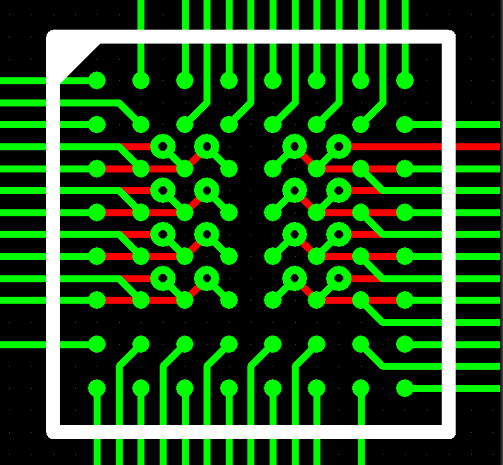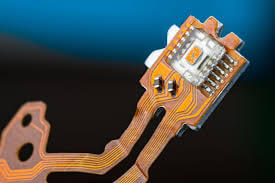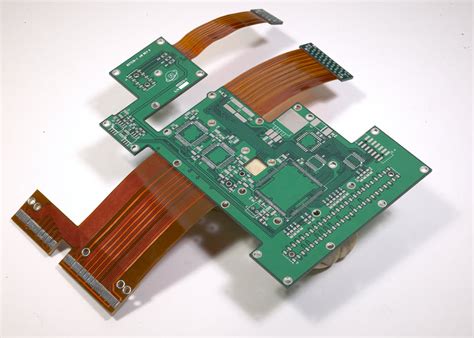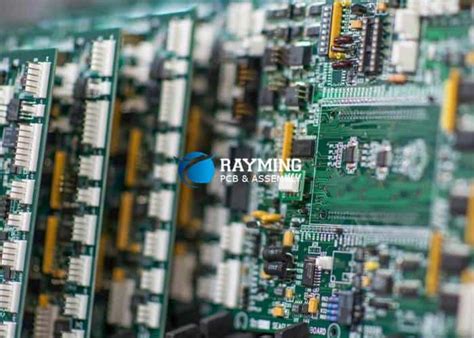Mastering Circuit Card Assembly Design: Key Strategies Unveiled
Key Takeaways
Mastering pcb assembly involves a comprehensive understanding of its fundamental principles. A well-designed pcba not only meets technical requirements but also enhances the overall functionality of the final product. To achieve this, it’s essential to adopt best practices when planning your PCB layout, focusing on optimal pathways for electrical flow while minimizing signal interference. In addition, innovative techniques for component placement can significantly impact the efficiency and reliability of your assembly. Employing modern quality control measures during the circuit card assembly process ensures that any potential issues are identified early, reducing costly mistakes later on. Furthermore, optimizing design for manufacturability (DFM) is vital, as it streamlines production and minimizes waste. Acknowledging common challenges that arise in circuit card assembly and proactively formulating solutions can set you apart in a competitive landscape. Finally, keeping abreast of advancements in tools and technologies empowers professionals to create superior PCB designs that not only meet expectations but also push the boundaries of innovation.
Understanding the Fundamentals of Circuit Card Assembly Design
In the realm of pcb assembly, mastering the foundational principles of circuit card assembly design (often termed PCBA) is crucial for ensuring the overall success of your electronic projects. At its core, circuit card assembly involves multiple interconnected processes that transform schematic designs into physical products. Key components such as circuit boards, components, and soldering techniques play pivotal roles in this transformation.
To effectively design a successful PCBA, one must begin with a clear understanding of the design files and goals. This includes knowing how to properly prepare Gerber files, which are essential for manufacturing and assembly. It is imperative to focus on aspects such as spacing, trace width, and component placement to facilitate both manufacturability and functionality.
Moreover, an often overlooked but critical component in circuit card assembly is thermal management. As electronic devices evolve, understanding how heat dissipation affects component performance can drastically improve the integrity and longevity of a circuit board. Incorporating these considerations during the design phase can prevent problems later on.
“The key to successful PCB design lies in proactive planning and attention to detail.”
Additionally, utilizing simulation tools during the design phase can help predict potential issues before they arise, enhancing both quality and efficiency in production. Staying updated with the latest industry standards is also vital to ensure compliance and robustness in your designs.
In summary, having a solid grasp on these fundamentals not only streamlines the pcb assembly process but also sets a strong foundation for innovative techniques that drive future advancements in circuit card design. As you delve deeper into this field, embrace continuous learning as it is essential for mastering circuit card assembly design.
Best Practices for Efficient PCB Layout
When it comes to pcb assembly, the layout plays a crucial role in ensuring both functionality and reliability. A well-designed layout not only maximizes space but also minimizes electromagnetic interference, enhancing overall performance. Start by adhering to a systematic approach; clear organization of components can greatly influence the assembly process.
Using standardized footprints for every component helps in avoiding mismatches and ensures compatibility across various pcba iterations. Additionally, implementing design rules consistently throughout the layout can prevent common pitfalls such as trace violations and short circuits.
Considerations around trace width and spacing are also paramount—adhering to calculations based on current requirements can prevent overheating issues down the line. In the table below, we highlight essential parameters for trace design:
| Parameter | Recommended Value |
|---|---|
| Minimum Trace Width | 0.15 mm |
| Minimum Space Between Traces | 0.15 mm |
| Maximum Current Density | 1 A/mm² |
Lastly, incorporate ample vias but strategically limit their use in high-frequency applications, as unnecessary vias can lead to signal integrity problems. By integrating these best practices into your pcb assembly projects, you ensure that every design is reliable and optimized for both production efficiency and ultimate performance.
Innovative Techniques for Component Placement
Efficient component placement is crucial in pcb assembly, as it directly influences the performance and manufacturability of the final product. To achieve optimal results, utilizing advanced software tools can facilitate precise placement strategies that enhance signal integrity and thermal management. By leveraging algorithms that maximize space while minimizing trace lengths, designers can improve the overall layout of pcba. Implementing proper stack-up techniques further aids in reducing electromagnetic interference, thereby ensuring the reliability of critical components. Additionally, adopting a holistic approach that considers design for manufacturability (DFM) principles can significantly streamline the assembly process, reducing costs and time-to-market. One innovative tactic involves grouping similar components together to enable a more efficient assembly line process, ultimately leading to better quality control outcomes. Emphasizing adaptive routing methods can also facilitate automated placement adjustments, enhancing flexibility during production. By integrating these cutting-edge techniques into the circuit card assembly design, engineers can enhance both quality and efficiency throughout each stage of development.
Quality Control Measures in Circuit Card Assembly
Quality control in pcb assembly is paramount to ensure the integrity and functionality of the final product. Implementing rigorous inspection processes at various stages of the pcba lifecycle can significantly reduce errors and enhance overall quality. Firstly, conducting thorough visual inspections during the initial assembly phase helps identify defects before components are soldered onto the board. Utilizing automated optical inspection (AOI) systems can further bolster this effort by providing precise feedback on component placement and solder defects, ensuring that every board meets the high standards required for reliability.
In addition to visual checks, employing test fixtures for electrical testing is crucial. These fixtures allow for early detection of any faults, enabling corrective measures before mass production begins. Another effective strategy involves adopting industry-standard methodologies such as Six Sigma or Lean principles, which focus on minimizing variability and improving process efficiency while enhancing the quality of the pcb assembly.
Moreover, maintaining clear documentation throughout each stage aids in traceability and accountability, creating a robust feedback loop that can lead to continual improvement. By fostering a culture of quality within teams, organizations can not only enhance their current processes but also innovate new strategies tailored to their specific challenges in circuit card assembly design. This comprehensive approach ensures that every aspect of production is optimized for durability and performance, establishing a solid foundation for successful pcba projects.
Optimizing Design for Manufacturability (DFM)
When engaging in pcb assembly, one of the most crucial aspects to consider is Design for Manufacturability (DFM). This approach emphasizes creating designs that are not only functional but also conducive to efficient manufacturing processes. A key goal in DFM is to minimize complexities and potential issues during the pcba process, ensuring that the assembly can be completed swiftly without compromising quality. To achieve this, designers should focus on several factors, including component placement and footprint size. By strategically positioning components and adhering to standardized footprints, you can facilitate easier assembly and reduce the risk of errors.
Additionally, integrating test points into your design can significantly enhance manufacturing efficiency. These allow for easier access during testing phases, ensuring any defects are identified early in the process. Another essential consideration is material selection; using compatible materials helps in achieving better adhesion during soldering processes, which is vital for reliable electrical connections. Ultimately, adopting a DFM mindset not only streamlines the pcb assembly process but also contributes to enhanced product reliability and reduced production costs over time. The result is a more robust approach that supports both innovation and sustainability in electronic design and manufacturing practices.
Common Challenges in Circuit Card Assembly and Solutions
In the realm of circuit card assembly design, several common challenges often arise, potentially hindering the efficiency and quality of the final product. One frequent issue in PCBA processes is the alignment of components. Misalignment can lead to soldering problems, causing unreliable connections. To address this, employing advanced automated assembly techniques can greatly enhance precision, ensuring that components are accurately placed during assembly. Another challenge is ensuring that the printed circuit board (PCB) design accommodates various thermal and mechanical stresses. Implementing robust thermal management strategies is essential, which may include using appropriate materials and designing adequate airflow pathways.
Moreover, during the pcb assembly process, managing component availability and supply chain logistics poses significant hurdles. A solution for this is to establish strong relationships with reliable suppliers and maintain an inventory of essential components to avoid delays in production. Addressing these challenges not only enhances the overall quality of the PCBA but also promotes a smoother workflow from design through to manufacturing. With a comprehensive understanding of these issues and the appropriate strategies in place, designers can significantly improve efficiency and reliability in their projects.
Advancements in Tools and Technologies for PCB Design
The realm of PCB assembly has witnessed significant transformations driven by advancements in tools and technologies. Modern software solutions now integrate sophisticated algorithms that enhance component placement, ensuring optimal spacing and reducing the risk of signal interference. With the advent of automated pcba tools, designers can effortlessly manage complex layouts while maintaining adherence to strict industry standards. The implementation of 3D modeling tools allows engineers to visualize circuit card assembly designs in a multi-dimensional view, facilitating better decision-making during the design phase. Moreover, simulation technologies enable real-time analysis of electronic behavior within the PCB, identifying potential issues before production even begins. This proactive approach not only boosts efficiency but also enhances the overall quality of the final product. As manufacturers continue to innovate, leveraging these technological advancements becomes crucial for achieving precision and reliability in every step of the PCB assembly process.
Conclusion
Mastering circuit card assembly design is crucial for achieving high-quality PCB assembly results. The integration of effective strategies, such as incorporating innovative techniques for component placement and implementing robust quality control measures, ensures that every step of the PCBA process is optimized for efficiency. Understanding the fundamentals provides a solid foundation, enabling designers to navigate common challenges and utilize advancements in tools and technologies. By focusing on design for manufacturability (DFM), engineers can significantly enhance both the performance and manufacturability of their designs. Furthermore, keeping an eye on emerging trends in circuit card assembly can help maintain a competitive edge in the rapidly evolving landscape of electronic design. As such, adopting these best practices will not only streamline production but also lead to superior outcomes in every PCB assembly project.
Frequently Asked Questions
What is PCB assembly?
PCB assembly refers to the process of placing electronic components onto a printed circuit board (PCB) to create a functioning electronic device. This process can include various techniques such as surface mount technology (SMT) and through-hole mounting.
What are the common challenges faced in circuit card assembly?
Some common challenges in circuit card assembly (PCBA) include component misplacement, soldering defects, and thermal management issues. These can impact the overall quality and efficiency of the PCB assembly process.
How can I optimize my PCB design for manufacturability?
To optimize your design for manufacturability, ensure that you follow best practices such as maintaining clearances, choosing appropriate component sizes, and using standard footprints for components. This will ease the PCB assembly process and improve production efficiency.
What are innovative techniques in component placement?
Innovative techniques include automated placement machines that enhance precision and speed. Strategies like optimizing the placement of components based on their function and accessibility further enhance efficiency in pcba.
How do quality control measures impact PCB assembly?
Quality control measures are crucial to identify defects early in the pcba process, reducing costs associated with rework and ensuring that each board meets specifications before reaching end users. Implementing regular inspections can significantly improve reliability.







